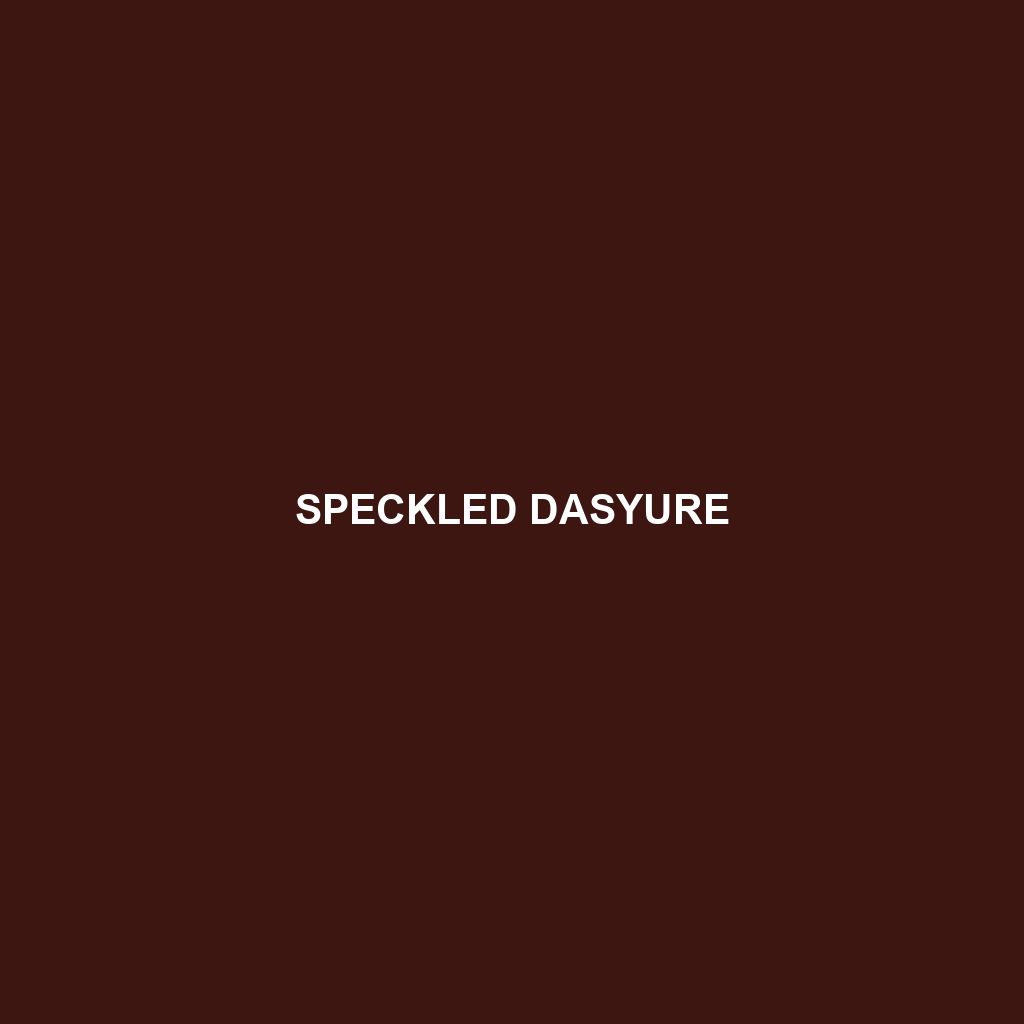Speckled Dasyure (Neophascogale lorentzii)
The Speckled Dasyure, scientifically known as Neophascogale lorentzii, is a small, carnivorous marsupial native to the mountainous rainforests of New Guinea. Known for its distinctive speckled fur and agile nature, this elusive creature plays a vital role in its ecosystem by controlling insect populations and serving as both predator and prey. Despite its significance, the Speckled Dasyure remains poorly understood due to its secretive habits and the challenging terrain it inhabits.
Physical Characteristics
Size: The Speckled Dasyure is a relatively small marsupial, with adults measuring approximately 20-30 cm (8-12 inches) in body length, excluding the tail, which adds another 15-20 cm (6-8 inches).
Weight: They typically weigh between 200-350 grams (7-12 ounces).
Coloration: Their fur is predominantly dark brown or black, interspersed with lighter speckles that give them their name. The speckling is more pronounced on the dorsal side, providing effective camouflage in their natural habitat.
Special Features: They have sharp claws and strong limbs, which are well-adapted for climbing and digging. Their eyes are large and adapted for nocturnal vision, reflecting their primarily nighttime activity.
Behaviors
Social Interactions: Speckled Dasyures are generally solitary animals, with individuals maintaining distinct territories. They communicate through scent markings and vocalizations, especially during the breeding season.
Feeding Habits: These marsupials are opportunistic feeders with a diet that includes insects, small vertebrates, and occasional fruits. Their sharp teeth and agile movements make them effective hunters of fast-moving prey.
Ecological Roles: As insectivores, they help control the populations of various arthropods, contributing to the ecological balance. Furthermore, they serve as prey for larger predators, thus fitting into the middle ranks of the food web.
Habitats
Preferred Environment: The Speckled Dasyure is typically found in the montane rainforests of New Guinea, at elevations ranging from 1,000 to 3,000 meters (3,300 to 9,800 feet).
Shelter: They prefer dense underbrush and fallen logs that provide ample cover from predators and environmental elements. They may also use abandoned burrows from other animals as shelters.
Adaptations
Camouflage: Their speckled fur provides excellent camouflage against the forest floor and leaf litter, helping them avoid detection by both predators and prey.
Climbing Abilities: Their strong, sharp claws and muscular limbs allow them to climb trees and navigate the rugged terrain of their mountainous habitat.
Nocturnal Lifestyle: Adaptations for nocturnal activity, such as enhanced night vision, help them avoid diurnal predators and exploit nighttime food resources.
Conservation Status
Current Status: The IUCN Red List currently classifies the Speckled Dasyure as “Least Concern,” but this status is based on limited data. Their remote habitat makes population assessments challenging.
Threats: The primary threats include habitat destruction due to logging and agricultural expansion. Climate change also poses a potential risk by altering their montane habitats.
Conservation Efforts: There are currently no specific conservation programs targeting the Speckled Dasyure. However, their habitat is partially protected under broader conservation initiatives in New Guinea.
Fun Facts
Marsupial Pouch: Like other marsupials, female Speckled Dasyures have a pouch where they raise their young. The young are born very underdeveloped and continue to grow and nurse in the pouch for several weeks.
Agility: They are incredibly agile and can leap significant distances to catch prey or escape threats.
Scientific Name: The species name “lorentzii” honors Dutch explorer Hendrikus Albertus Lorentz, who contributed to the early natural history studies of New Guinea.
The Speckled Dasyure remains a fascinating subject for researchers due to its unique ecological role and the intriguing adaptations that allow it to thrive in its challenging environment.
